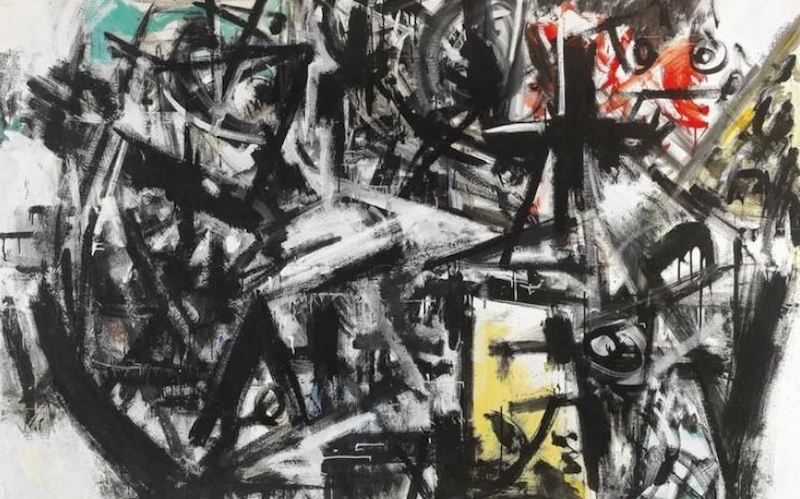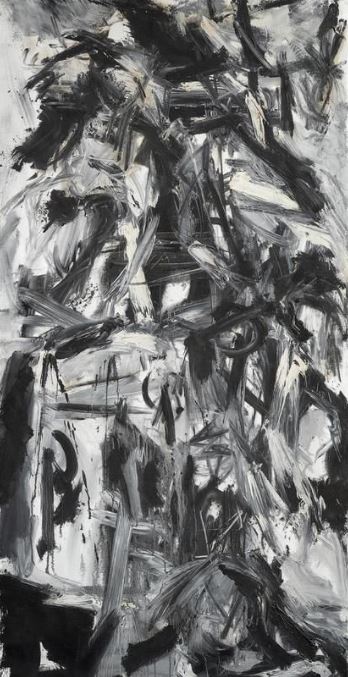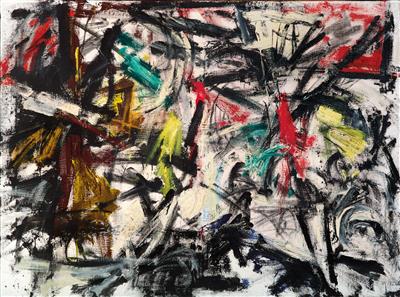
In Europe, the beginnings of abstraction in art can be found in Informalism, with artists processing the unconscious expressively in form and colour. Two works by Emilio Vedova, an important representative of Informalism, will feature prominently in our Contemporary Art auction on 16 May 2018.
by Petra Schäpers and Susanne Zimmermann
The Hand Paints by Itself

In Europe, the beginnings of abstraction in art can be found in Informalism, with artists processing the unconscious expressively in form and colour. Two works by Emilio Vedova, an important representative of Informalism, will feature prominently in our Contemporary Art auction.
From the 1940s onwards, artists expressed their liberation from the trauma and horror of the Second World War through abstraction in their art. American artists spearheaded
this new movement with Action Painting and Abstract Expressionism. From 1947 the movement was taken up by Informal artists in Europe. These movements of abstract art differed in terms of nuance and developed around the world from 1950 onwards in a variety of conditions. All artists set themselves a high standard of truthfulness and authenticity; they often expressed themselves on large-scale canvases that testified to a previously unknown immediacy and physical directness in their painting.
For biographical reasons, every artist developed a very personal style. Abandoning the principle of image composition and realistic motifs was a highly significant step for all of them. Painters allowed materiality to speak through the haptic and physical properties of paint and support and appropriated it for their work. Artists insisted on their aggressively presented gestural handwriting and appealed to their own personality, and to nothing else, with this eminently physical painting. The hand painted by itself: Informal artists used canvas to process matters of their subconscious, things they had seen and experienced during the war, during resistance and imprisonment.
Venetian Impulse

Emilio Vedova started to teach himself to paint in the 1930s and also worked for a photographer and restorer. His artistic oeuvre sprang from the “Venetian impulse”, his intense preoccupation with the architecture and nature in and around his native city of Venice. As early as the 1930s, Emilio Vedova started to dissolve his realistic images into expressive brush strokes. His paintings are evidence not just of his deep connection to Venice, but also of the things he saw and experienced as a member of the resistance.
All his experiences flowed into his work in an immediate gestural expression. In 1942 Vedova joined Corrente, a group of artists who spoke out against fascist art. From 1944 to 1945 he fought in the resistance as an anti-fascist and signed the “Beyond Guernica” manifesto in Milan in 1946. Together with artists such as Renato Guttuso, Bruno Cassinari and Renato Birolli, Emilio Vedova established the Nuova Secessione Artistica Italiana in Venice in 1946. Vedova debuted at the Venice Biennale in 1948; by 1952 an entire room was dedicated to his work. His cycles entitled “Scontro di situazioni”, “Ciclo della Protesta” and “Cicli della Natura” were created in the early fifties. They show unusual and original versions of specific personal states of awareness that Vedova processed in his paintings. By the time of documenta II, held in Kassel in 1959 and attended by Emilio Vedova among others, the institutional establishment of free abstraction was complete.
AUCTION
Contemporary Art I
16 May 2018, 6 pm
Palais Dorotheum Wien
Information:
Petra Schäpers and Alessandro Rizzi, Experts for Contemporary Art
image above:
Emilio Vedova
Study for Cycle of Protest No. 6
from the Cycle of Protest, 1953
oil on canvas, 140 x 190 cm
estimate € 280,000 – 280,000











